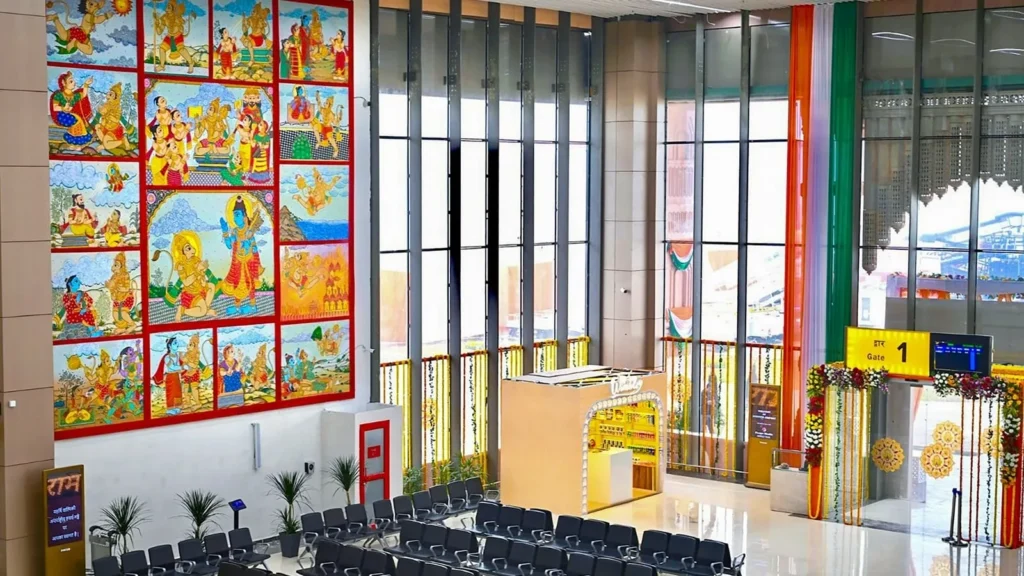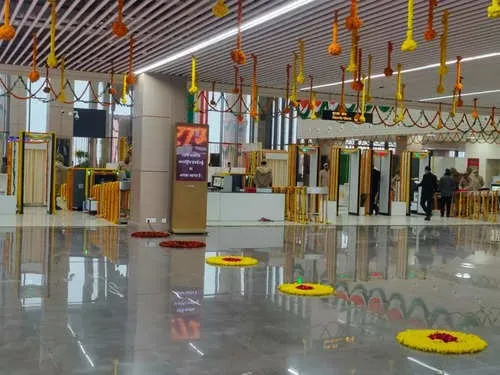The Maharishi Valmiki International Airport commonly known as Ayodhya Airport emerges as a remarkable feat of infrastructure, promising holistic community development and cultural enrichment. Beyond its physical dimensions, the airport’s green building Certification underscores India’s commitment to sustainable practices, marking a new era in environmentally conscious aviation. Over the last decade, India has witnessed unprecedented aviation traffic and infrastructure growth, with the Ayodhya Airport representing the latest milestone in this journey.

The two-storeyed Ayodhya Airport structure is adorned with elevational elements that depict the sacred city’s rich history. The ground floor offers expansive amenities, while airport operations are conducted from the first floor. At the main entrance, a grand stepped shikar stands tall, adorned with brass, following the Nagara style. These architectural elements, embellished with scriptures, provide a culturally rich welcome to passengers, with ‘Toran dwars’ standing out remarkably, symbolizing a connection to the region’s heritage.

The terminal building serves as a canvas of profound messages, with murals depicting the timeless tale of Lord Ram from the Ramayana. Artworks, including the Bow and Arrow mural, symbolize courage and the triumph of truth. Skylights strategically placed throughout the airport offer a sensory experience for passengers, enhancing way finding and navigation.

Embracing carbon neutrality, the airport pioneers sustainable practices with eco-conscious Glass Fiber Reinforced Concrete (GRC) materials. Meticulously crafted ornamental work in GRC replaces traditional stone facades, contributing to substantial carbon emission reduction. The airport’s design aims to develop Ayodhya as one of the world’s largest pilgrimage centres, providing seamless connectivity and enriching the journey for pilgrims.
